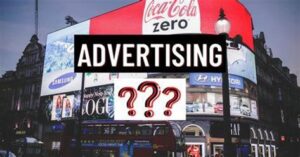
Unit 18
Brand Advertising
職場攻略/市場業務
Workplace English/Communication Skills
BRAIN STORM
Share your ideas with your teacher and try to make sentences.
What brands have you seen advertising recently? Where do they advertise their products?
VOCABULARY
Repeat these sentences after your teacher.
1. brand advertising (phr.) 品牌廣告
We have to strengthen our brand advertising.
我們必須加強品牌廣告。
2. direct response advertising (phr.) 直接回應廣告
We should aim for a direct response advertising.
我們應該針對直接響應廣告。
3. bombarded (n.) 轟炸
She was bombarded with questions!
她被問題轟炸了!
4. arenas (adj.) 方面
The public arenas are open for use.
公共場所開放供使用。
5. distinct (adj.) 獨特
Apple’s ads are so distinct.
蘋果的廣告是如此獨特。
6. engagement (n.) 吸引、接觸
How do we increase our engagement?
我們如何增加參與度?
7. delineate (v.) 描繪
Sam will delineate our marketing strategy.
山姆將描述我們的營銷策略。
Dialogue
Read the dialogue aloud with your teacher.

Thank you for coming to my talk today. My name is William Harrington. I’ve spent most of my career in advertising working for some of the world’s largest ad agencies. Today I’ll be talking about two different types of advertising: brand advertising and direct response advertising.
Everyday, all of us are bombarded with advertising in nearly all arenas of our lives – in the newspaper, on the sides of buses, and of course on our digital devices. Within this larger umbrella of advertising, however, there are two distinct styles of engagement that delineate the most significant divide on how to approach convincing a customer to buy a product.
謝謝各位來聽我的演講。我叫 William Harrington。我的職業生涯大部分時間是在廣告行業渡過的,為世界上最大的一些廣告公司工作。今天我會講講兩種不同類型的廣告:品牌廣告和直接反應廣告。
每天我們的生活都被廣告轟炸——報紙,公車,當然了還有電子設備。然而在這把廣告的大傘下,有兩種廣告傳播的方式會描繪出如何說服顧客購買產品最重要的區別。

The first approach is called “brand advertising”. Brand advertising is focused on making the customer feel a certain way about a product, often pushing them to associate a product with certain ideas or concepts that may or may not have anything to do with the product itself. In this way, brand advertising is doing just that – advertising a brand, not a product.
Examples of this are everywhere in our modern advertising landscape. Many alcohol brands make advertising that conflates the consumption of their product with sexy people or exciting parties. Are the sexy people and exciting parties the product itself? No, the product is an alcoholic beverage. But the idea is to create a brand through ubiquitous ad placement where the customer associates consuming the alcoholic beverage with sexy people or exciting parties, which in theory leads to them to consume the said beverage.
第一種方式叫做“品牌廣告”。品牌廣告指的是讓顧客對於產品產生一種感覺,一般會使顧客把產品和某個觀點或者概念聯繫起來,有時產品和這些概念沒有直接的關係。從這個角度說,品牌廣告的目的就是宣傳品牌,不是產品。
這樣的例子在現代廣告界比比皆是。比如很多酒類廣告會把他們產品和性感的人和刺激的派對聯繫在一起。但是性感的人和刺激的派對是他們的產品嗎?不是,產品是酒精飲料。不過這個做法就是塑造一個品牌,通過大量的廣告投放讓消費者把喝和性感的人和好玩兒的派對聯繫起來。理論上說,就會讓大家想購買這種飲料。

I say “in theory” because one of the main drawbacks to brand advertising is the difficulty in measuring its success. Most brand advertising does not have a discernible call to action – showing sexy people drinking your product is not directly saying “ Go buy our product!”, it’s simply showing sexy people drinking your product.
This is not to say that brand advertising cannot have a return on investment, but the opaque nature of gauging this ROI leads many advertising campaigns to tend towards the other main approach – direct response.
我說“理論上”,是因為品牌廣告的一個缺陷就是難以衡量廣告是否成功。很多品牌廣告沒有一個明顯的行動呼籲——展示性感的人喝你品牌的酒並不是直接地說“來買我們的酒!“,它只是展示性感的人在喝你的產品而已。
這並不是說品牌廣告沒有投資回報。不過如何衡量投資回報是比較模糊的,所以很多廣告活動更傾向於另一個廣告手法——直接回應。
Grammar
May or may nott
“May or may not” is a set phrase placed into phrases to intentionally indicate doubt. In this way it is similar to a more formal way to say “might”. In practice, it infers a greater deal of neutrality than “might”.
1. What’s new? Well, I may or may not have big news to share with you…I’m pregnant!
2. I may or may not come to your party, I have to see what ends up happening with my meeting beforehand.
3. You may or may not know, but when I was a child I was a celebrated gymnast.
4. ___________________________________________________________.
DISCUSSION
Make a conversation with your teacher.
1.What do you think are the factors that will influence what people think of your product?


